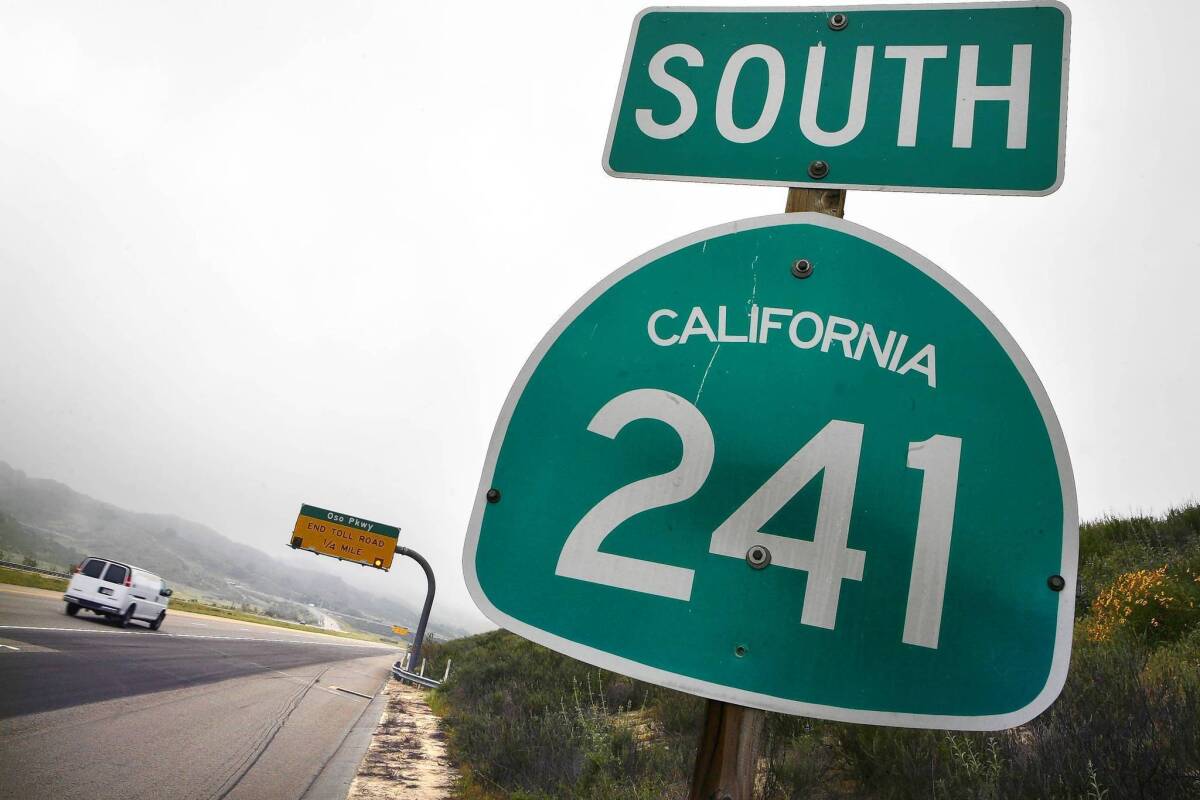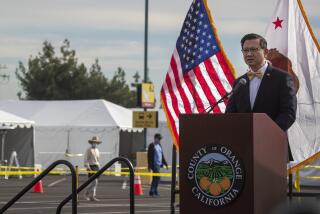O.C. toll road agency could keep fees through 2053

The leaders of Orange County’s toll road network on Thursday approved a $2.4-billion bond sale to refinance one of its highway corridors — a move that would probably extend the number of years drivers must pay to use the system.
The planned restructuring could shore up the operation’s sagging finances but add 13 more years of tolls, meaning that the Foothill-Eastern system would not become free to motorists until 2053.
The corridor includes the 133 tollway in central Orange County and the 241 and 261 tollways, which slice through the hills from Yorba Linda to Rancho Santa Margarita.
All three roads along with their sister highway, the San Joaquin Hills near the coast, have been battered by lower-than-projected ridership and revenue at the same time that their debt payments have been increasing.
When they opened in the 1990s, Orange County’s toll roads were among the most ambitious and extensive in California, and they were held up as a model for building highways at a time when state dollars were lean. But the roads have long struggled to attract drivers and make money.
In response to the proposed bond sale, the state treasurer’s office announced Thursday that it has begun a financial review of the entire 51-mile tollway network operated by the Transportation Corridor Agencies in Irvine.
By taking advantage of today’s lower interest rates, Transportation Corridor Agencies officials say, the refinancing would protect the agency’s credit rating, reduce the pressure to increase tolls and lower the annual growth in debt payments from 4.4% to 3.5% or less.
The restructuring, however, would extend toll collection and the date to pay off the Foothill-Eastern’s bonds from 2040 to 2053. If revenue increases, agency officials said, they might be able to retire the debt earlier and hand the 133, 241 and 261 over to Caltrans to operate as free state highways.
“This is like refinancing a home mortgage,” said Lisa Bartlett, Dana Point’s mayor pro tem and chair of the Foothill-Eastern’s Board of Directors.
Board members voted 12 to 1 to approve the bonds, with Bob Baker, a San Clemente councilman, casting the only no vote. He said he was concerned that the agency was extending its debt longer than originally planned and would incur enormous costs.
At earlier meetings in which the refinancing was discussed, other board members said they did not like the idea of breaking a promise to motorists that they would not be charged tolls beyond 2040 to use the Foothill-Eastern system.
“This is a very difficult vote to swallow, because it’s changing expectations and commitments of a lot of different people,” Orange County Supervisor Todd Spitzer said at a May board meeting. Spitzer was in Sacramento on Thursday and did not vote on the bonds.
The Foothill-Eastern corridor and the San Joaquin Hills have been battered by tough financial times, overly optimistic projections, lower-than-expected population growth and competing public highways. Interstates 5 and 405 have been widened and improved in recent years.
Ridership and revenue for Foothill-Eastern are now substantially below forecasts, a change from earlier times when the road was steadily running 8% to 10% ahead of projections. Agency officials say, however, that there has been a recent increase in revenue because of higher tolls.
The San Joaquin Hills has never performed as expected. In 2011, the agency restructured about $2.1 billion of the road’s debt and pushed back the retirement of its bonds to 2042, extending the toll collection period by six years. It was the second time the original deadline of 2033 was reset.
Tolls in Orange County — which are nearly $11 for a round trip on the San Joaquin — are among the highest in the nation on a per-mile basis. Though ridership on the San Joaquin has never reached projections, tolls on the road have been raised at least a dozen times since 1996.
Rating agencies have given the newly approved bonds the lowest investment grade, except for $206 million in notes that have received a speculative or junk rating. Analysts noted that traffic appears to be stabilizing on the tollways as Orange County emerges from recession.
More to Read
Sign up for Essential California
The most important California stories and recommendations in your inbox every morning.
You may occasionally receive promotional content from the Los Angeles Times.











